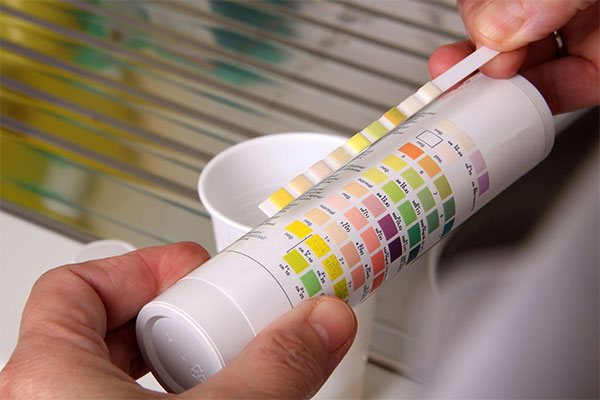Abnormal urine colours and liver diseases

Human urine consists of primarily of water and waste products that the kidneys filter from the blood. According to medical studies, the normal range of urine output is 800 to 2,000 millilitres per day with the amount of fluid intake of about 2 litres per day. And for most of the time, urine is a pale yellow colour as it contains a pigment named urochrome or urobilin.
The colour of urine can be easily ignored as it is either typically yellow or can be altered by foods that the person eat and the medications that he/she take. Certain changes of urine colour, however, may be an early sign of medical emergency. For the sake of your health, we highly recommend you to consult your doctor when identifying an abnormal urine colour discussed as follows.
Orange urine
When urine turns orange, it can be caused by several medications including rifampin, or isoniazid for tuberculosis (TB) treatment, high doses of riboflavin, a B vitamin, and phenazopyridine (Pyridium). Apart from using medicine, it could also be a sign that the patient is dehydrated or that there’s a problem with the liver or bile duct.
Red urine
Red urine may be due to blood in urine. The colour can vary from pink to dark red. Eating beets, blackberries can turn the urine pinkish or red since they contain a red pigment that can be excreted in the urine. But pathologically, it can be associated with urinary tract infections, cancerous and noncancerous tumours, kidney cysts, kidney or bladder stones, or an enlarged prostate for male patients.
Dark brown or black urine
When the colour of red urine looks dark, it may appear brown or black. The causes may be similar with that of red urine. But if your urine is dark brown, it may be due to the breakdown product of haemoglobin which can build up in the blood of patients suffering from hepatitis and cirrhosis, or even tumour. Hepatitis A and hepatitis C infected patients have symptoms including fever, decrease appetite, nausea, abdominal pain, dark urine, jaundice and joint pain. Besides, the excess bilirubin getting into the urine can also make the urine look brownish.
Blue or green urine
Inherited conditions like blue diaper syndrome and Hartnup disease can result in blue urine. If the urine appears greenish colour, it probably mixes the blue colour with yellow urochrome which is present in the normal urine. But green urine can be a sign of urinary tract infection caused by pseudomonas bacteria.
If patients have any concern about the urine colour, they are highly recommended to see a doctor to perform a urine analysis. It is especially important for those passing dark brown urine.
*The above information is for reference only, please consult your doctor for detail.

 3405 8288
3405 8288
